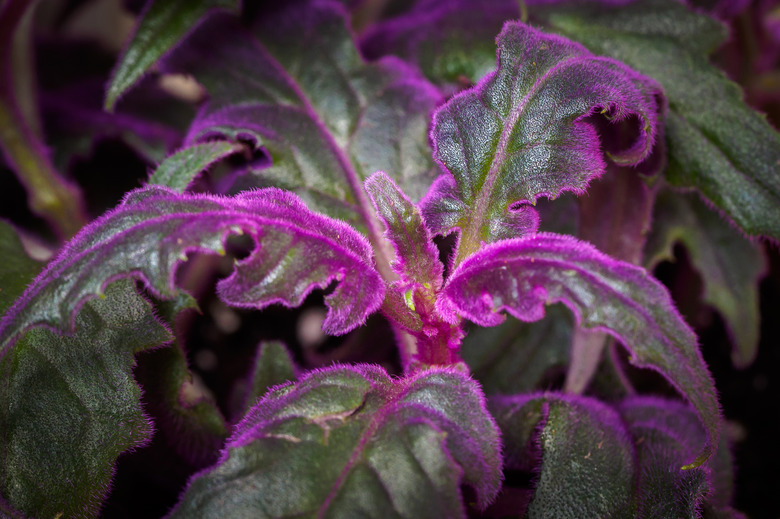How To Grow A Purple Passion Plant
Houseplants can be so ho-hum. That is why the purple passion plant (Gynura aurantiaca, USDA zones 10-12) is a star among indoor gardeners who crave color and texture. Houseplant growers love this colorful purple fuzzy plant for its versatility, low maintenance and impressive purple and green hues that range from dark to light. It can be trimmed as a bushy plant or left alone to grow to cover a small tabletop or drape down a bookcase with showy leaves covered in a fine purple down.
What Is a Purple Passion Plant?
What Is a Purple Passion Plant?
As part of the sunflower family (Asteraceae), purple passion plant hails from the humid areas of Java. The green leaves are covered in a soft down of bright-purple hairs.
As the plant matures, its spiky leaves reach out and down on long stems, becoming more like a vine as it thrives. The vines can grow up to 8 feet long but may lose their vibrant coloring. If you prefer the draping vines of the purple passion plant, keep the growth at around 3 feet or less to enjoy the varied purple and bright-green hues.
Although it's hardy outdoors only in the tropical climates of USDA zones 10 through 12, purple passion can be grown indoors nearly anywhere. The plant can be grown outdoors in plenty of shade and humidity during warm weather. It is nontoxic and requires little pest control, with only mealybugs and aphids to contend with on occasion.
Light Factors for Growing
Light
Factors for Growing
The purple passion plant prefers medium light or a sunny spot that does not get too much direct sunlight for long hours. Bright light on a windowsill or medium light on a bookshelf is ideal for this pretty houseplant.
Best Soil for Good Growth
Best
Soil for Good Growth
The purple passion plant loves to be moist but not wet. It would rather have a dry soil than have its roots sitting in puddles of water. It will get root rot if the pot in which it lives doesn't have good drainage.
Use a potting soil that is designed to drain well, keep watering to a weekly minimum and the plant should be able to flourish without any other added attention.
Purple Velvet Plant Care
Purple
Velvet Plant Care
Once you have the soil, light and the right water level in place, the purple passion plant doesn't need to be fussed over to thrive. It is loved not only for its coloring and fragrant flowers but also for its low maintenance. A purple passion plant left to its own devices will show off lengthy branches of wide, purple-sheened leaves.
When to Repot
When
to Repot
The purple passion plant will keep its attractive leaves for two to three years before it needs attention. Repot a waning purple passion plant with fresh soil and fertilizer to bring back its vibrant hues.
The purple passion plant can easily be propagated through root cuttings. Use a perlite or vermiculite mix for the roots to prosper.
Color Considerations
Color
Considerations
If the plant isn't producing a bright-hued purple, it may be old or in need of a boost of nutrients. The plant isn't too picky. A solution of water and blooming plant food is fine to use. The plant can tolerate water-soluble diluted plant fertilizer once a week or just once a month during growth periods in warm seasons.
